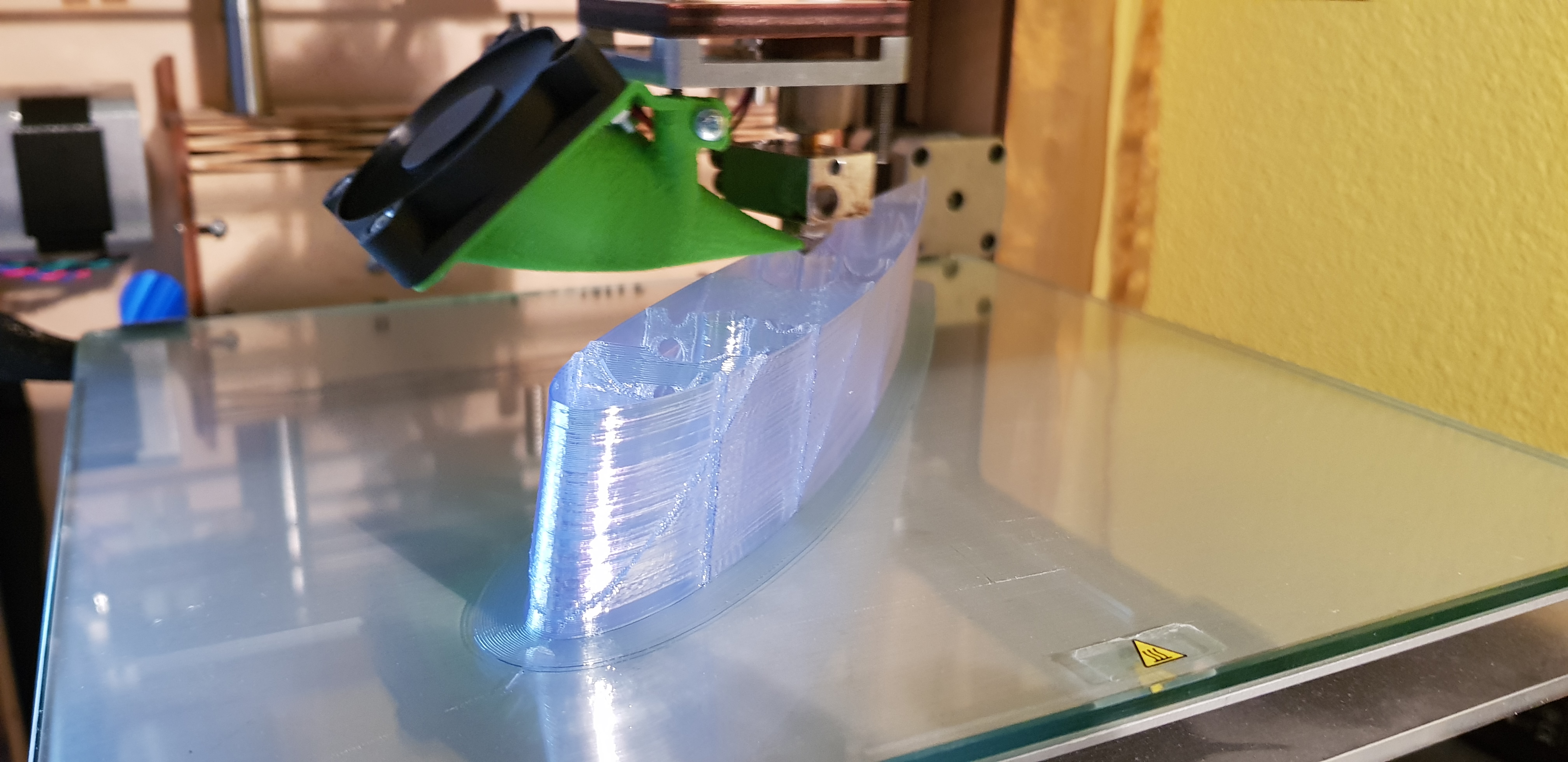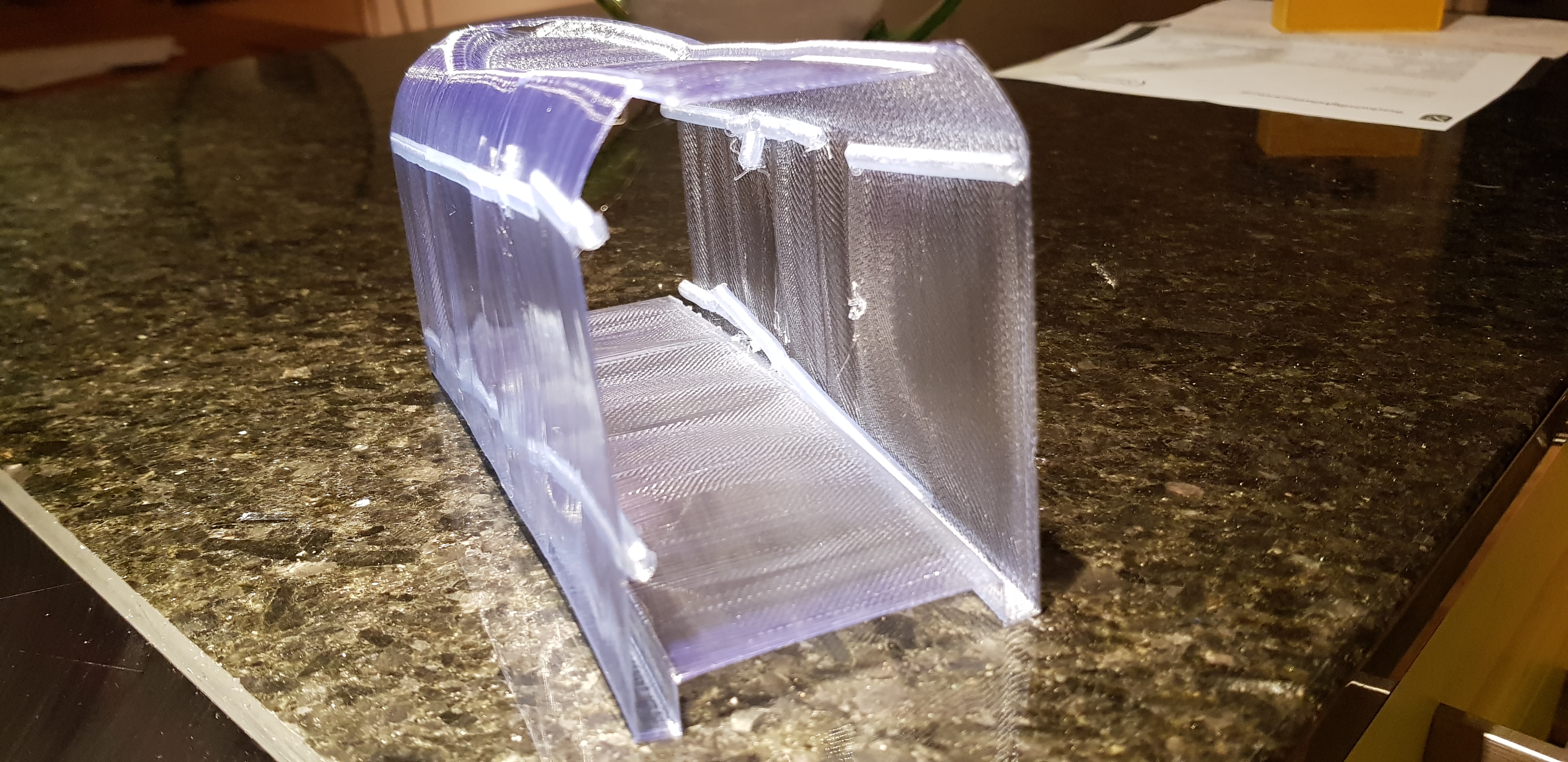Published September 2020
Motivation? It's a plane! It flies! And it's all self-built! What more do you need?
In a bit more detail: I enjoy making things and there are phases in my life, where I get out all my RC planes and fly around. During one of those phases I stumbled across the C-36 model by MMenz on Thingiverse and immediately fell in love with it!
A lot of the design was done due to the amazing work of MMenz! - However I had to adapt a couple of parts, since with a different printer and a different slicer things don't always turn out as intended. Particularly the holes for the 4mm carbon fiber rods assembling the fuselage would always print too small for me, so I had to redesign a couple of parts.

Printing a part of the wing. Single wall layer print.
For your prints to turn out nicely you have to spend some time optimizing your printer. Essentially in building a plane you want to be ultra light weight, so what you're printing is a single wall layer structure, meaning the wall thickness is 1. In other words your nozzle passes every wall exactly once while printing and your plane's outside surface will only be as thick as your nozzle size (0.4mm in my case). This is ultra thin and feels weird at first. But if the parts fit together nicely it's actually enough. Needless to say that your printer needs to function precisely when printing airplane parts, otherwise your walls won't work and have holes.
Also, you'll need to manage the filament and printing temperatures. Printing with a warm heat bed is essential to prevent warping, but keep it warm for too long and the single-layer wall structures can deform while printing. This depends on the geometry of the piece and the material you're using. Make sure that it's a high quality brand of PLA (or ABS if you prefer).

A print that failed.
The finished C-36 is beautiful and flies amazingly. It's lightning fast, stable and super agile in the air. However the single wall print remains a bit fragile, you need to master your landings pretty optimally to keep it safe.
I yet have to find the energy to draw a full plane model in CAD. But the adaptations to one, as well as all optimizations on the printer and tuning of the printer settings have taught me a lot about precise 3D printing.